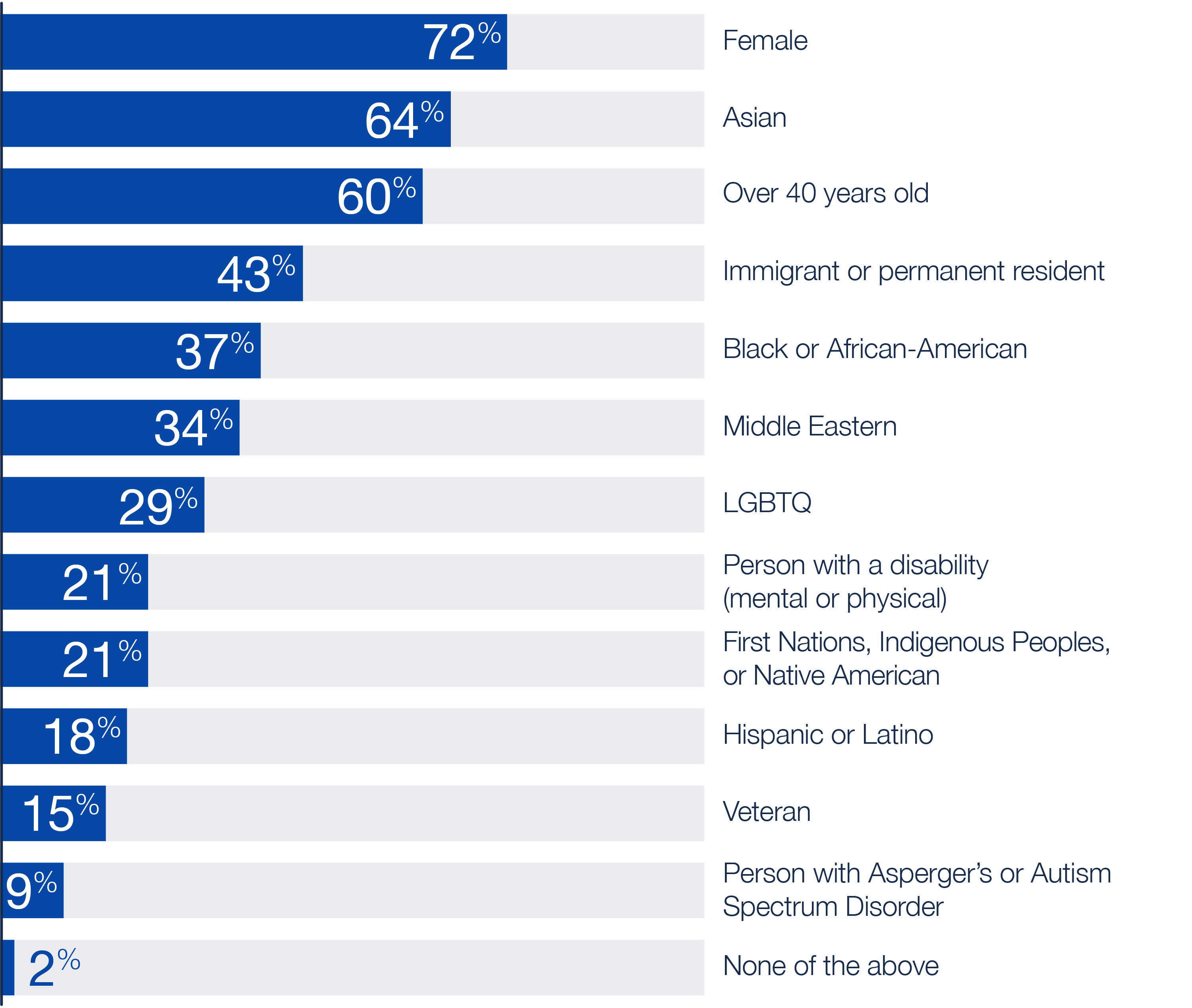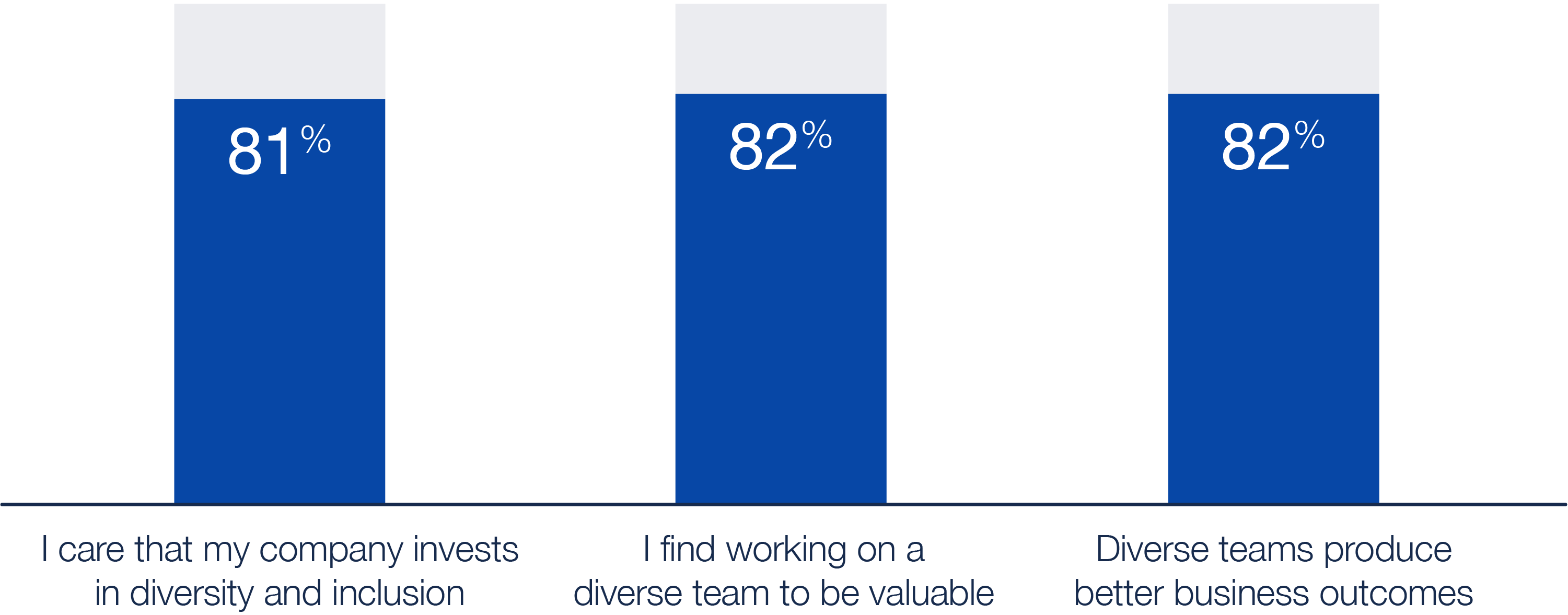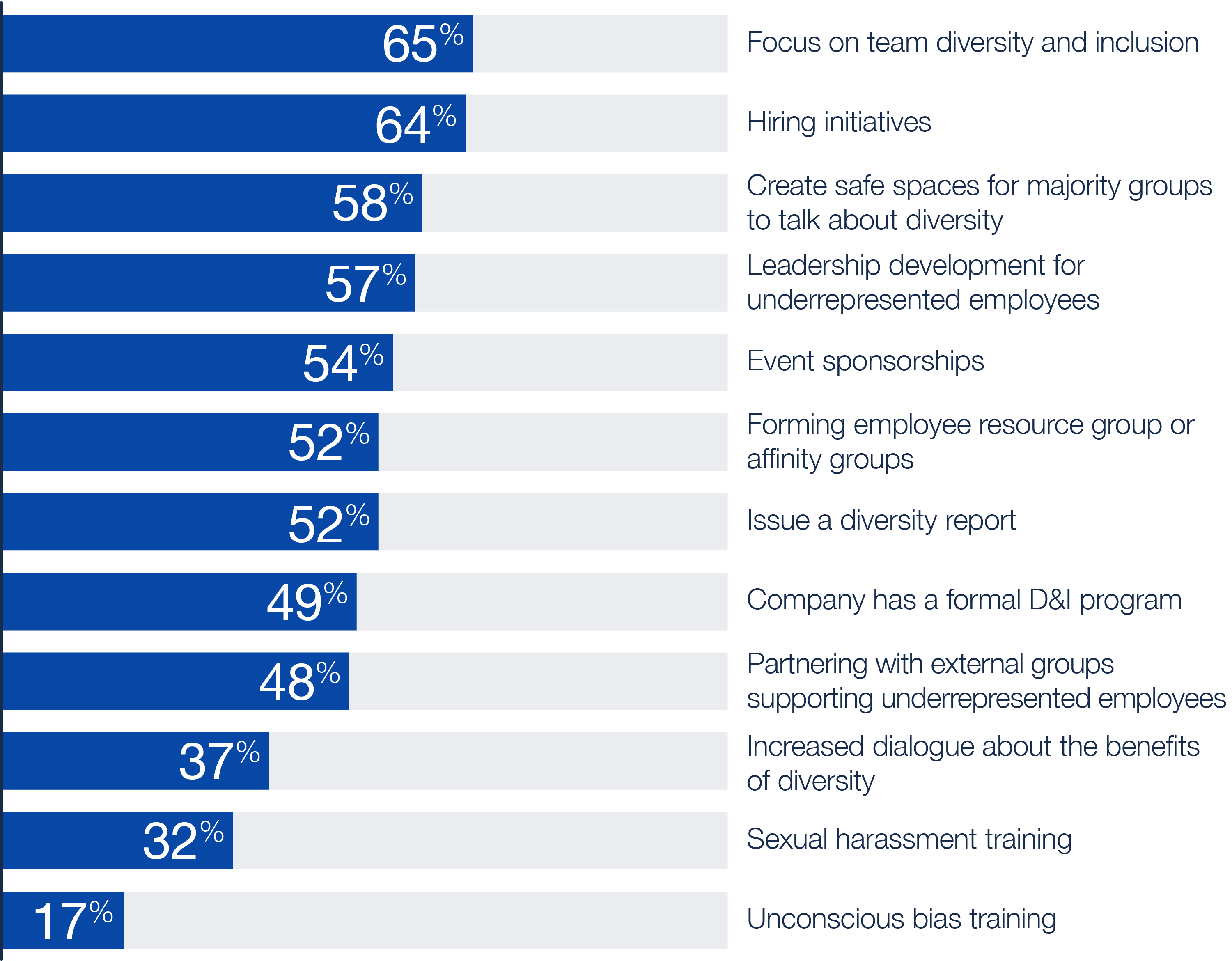Fresh data reveals diversity fatigue is a global problem
We surveyed tech workers from Australia, Brazil, France, India, Philippines, U.S., and U.K. to learn more.
The tech industry is supposed to be a beacon of innovation, agility, and disruption. It’s producing world-changing technology to push the limits of human knowledge and experience. And yet, it continues to fall short in advancing one very important area: diversity and inclusion (D&I). Our recent State of Diversity in Tech report explored year-over-year data for Silicon Valley and the United States, revealing some worrisome trends. Most notably, fewer people are making an effort to improve D&I, even though underrepresentation, a lack of belonging, and lower retention for those from underrepresented groups persists.
Now, new global research shows these issues are not limited to the U.S. In fact, they are even worse in some countries.
We surveyed tech workers from Australia, Brazil, France, India, Philippines, and the United Kingdom to understand how companies and individuals around the world are tackling these challenges. Similar to the U.S., the data shows we’ve succeeded in raising awareness and spurring some efforts to improve, but we’ve yet to affect lasting behavioral, cultural, and structural change. Many say no improvements are needed, although little progress has been made, which suggests there’s a severe perception gap between what people think diversity means and what progress really looks like.
Download the “2018 State of Diversity and Inclusion in Global Tech” report for a summary of global insights and a detailed breakdown of data for each country.
A deeper look at Australia’s progress
Because Atlassian was founded in Australia and our global headquarters reside in Sydney, we took a closer look into attitudes and perceptions about D&I issues among tech workers in Australia*.
Key findings:
- Participation in D&I initiatives is catching up to the United States and Silicon Valley, but progress has not. Representation, retention, and a sense of belonging remains at global industry-level averages of less than 30% among employees from underrepresented groups.
- Australia has a significant “perception gap”: perceived representation is higher than it actually is, and there’s a discrepancy between belief and action.
- The conversation about gender equality is progressing faster than the conversation about other types of diversity.
Key statistics:
- 70%+ of respondents say they believe a diverse team is valuable, care their company invests in D&I, and diverse teams produce better outcomes.
- Only 36% believe we’ve made excellent progress on D&I, and less than 40% give an “A” grade for D&I to tech, their company, and their team.
- Yet despite these low numbers, 50% believe their company needs no improvement in representation.
- 74% of respondents consider women to be part of diversity, but only around half of respondents believe other groups (based on age, sexual orientation, etc.) are part of diversity.
Australia’s discrepancy between belief and action
The D&I movement has been influenced and reinforced by conversations happening among media, lawmakers, and corporations. Bloomberg reports Australia has proposed gender diversity rules for public companies; MarTec‘s list of “100 Tech Companies to Watch in 2018” made a point of highlighting diversity and inclusion programs at several Australian tech leaders; and Smart Companies published new survey data conducted by Linkedin Australia showing a focus on updating leave policies and releasing diversity reports.
Unfortunately, companies aren’t necessarily turning words into action.
Australian respondents agree with the following statements:
And companies are starting to take action in Australia:
But less than half of respondents say they’ve taken individual action in the last 12 months:
Overestimating representation
Action may be lagging because tech workers in Australia don’t have an accurate understanding of the scope and scale of the problem.
For example, a large percentage of respondents claim to have the following identities on their primary team (even though these estimates are at odds with data on the actual representation of particular groups across the tech industry):
 Many respondents who say their company needs no improvement in the following areas:
Many respondents who say their company needs no improvement in the following areas:
But studies that rely on hard demographic data (vs. individuals’ perceptions) paint a starkly different picture, especially at the executive level. Several studies (one from ABC and one from the New York Times) show leadership in Australia is still overwhelmingly comprised of white men, despite a diverse population. This incongruence between perception and reality isn’t surprising, though, given that studies show the representation of women, people of color, and those with intersectional or other underrepresented identities is frequently overestimated.
A narrow conversation
Despite more interest in D&I, the conversation has been primarily confined to gender. LGBTQ* issues are starting to come to the forefront as well, but there’s very little focus on other types of diversity like accessibility and age.
Respondents were asked, “Which of the following groups are part of a diverse team? Select all that apply”. Australian tech workers include minority and majority groups at varying rates:
By comparison, the U.S. (and Silicon Valley in particular) is starting to have more well-rounded discussions to address issues like race or ethnicity, education, accessibility, and age. Some progressive companies are also considering and addressing inclusion and belonging. This is key to making lasting change, as hiring more people from underrepresented groups won’t ultimately change the makeup of our workforce if those people don’t feel a sense of belonging and see opportunities for growth once they join.
Creating a more inclusive future in Australia
Building balanced and diverse teams is not only the right thing to do, it’s the smart thing to do. We live in an increasingly globalized, knowledge-work based environment, and research shows diverse teams produce better outcomes. At Atlassian, for example, we recognize that to effectively build products used by all, we need a variety of perspectives represented on the teams building them.
The good news is that Australia is making strides toward a more inclusive future. The recent marriage equality vote, the Senate sub-committee to discuss skilled worker immigration, and a concerted effort by tech companies to improve representation point to progress. For example, the Australian Financial Review covered the 457 visa debate, in which several tech leaders (including Atlassian co-founder and co-CEO Mike Cannon-Brookes) shared concerns about the skilled labor market in Australia. Further, unlike their North American counterparts, diversity fatigue does not seem to have set in for Australians (see our State of Diversity in Tech report for more on this). We are optimistic about progress, and we remain committed to helping move the industry forward.
If we’re truly going to create a better future, we need to start by creating a better present. See the 2018 State of Diversity and Inclusion in Tech report for more on what you can do to help make meaningful progress. Or tell us how you are pushing for change, and share your best diversity tips using #teamup.
* Data represents 200 Australian tech workers

















































